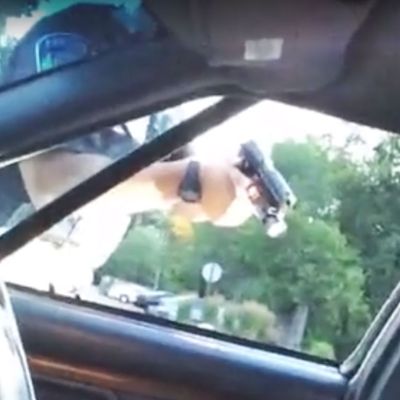
If you want to see what Facebook wants out of its much-hyped new live-video feature, you should follow the money. In its aggressive push for the format, the company is shelling out millions of dollars to publishers like BuzzFeed and the New York Times, and celebrities like Russell Wilson and Kevin Hart, in order to spur a new type of sharing. But so far — exploding watermelons notwithstanding — there’s not much to get excited about. The early days of Facebook Live from big media companies has been a poor approximation of television — a cooking demonstration or a talking-heads panel, awkward people without media training seeking engagement.
What, then, is Facebook to make of last night’s protests across the nation, the shooting in Dallas, or Wednesday’s livestreamed aftermath of the shooting of Philando Castile at the hands of the police? In a gut-wrenching ten minute video, Castile’s girlfriend Diamond Reynolds goes from sitting beside his injured body in the passenger seat, to on her knees outside the car at officer’s orders, to the back of a cop car with her 4-year-old daughter. It is footage that is at once strikingly familiar and distinct.
Images of black people dying at the hands of police have become all too common — Michael Brown, Walter Scott, Alton Sterling, and too many others — but Reynolds’s footage, shot from her perspective not as a bystander but as a central figure, is a new twist on the depressingly pervasive format. Livestreaming became a central tool for protesters in the wake of Michael Brown’s death in Ferguson two years ago, but this is the first time it’s been used by a central figure in the moment of an actual violent encounter with police.
As horrifying as it is, this is, on a broader scale, a perfect example of the promise of new technology and the internet — giving a digital megaphone to people and amplifying voices shut out of mainstream media. What then does that mean for Facebook’s live-video initiative, which seems laser-focused on replicating mainstream media’s familiar silhouette instead of embracing entirely new formats? (This is hardly, as of right now, the most important question in need of an answer, but how platforms like Facebook learn and react from videos like Reynolds’s will help shape the future.)
There is no way for Facebook to “lean in” to the culture of livestreaming that surrounds the movement to reform police violence in the same way that it is throwing money at corporate digital publishers without taking a strong political stance. In a post last night, Mark Zuckerberg expressed his condolences to Castile’s family, but remained vague in his phrasing.
The images we’ve seen this week are graphic and heartbreaking, and they shine a light on the fear that millions of members of our community live with every day. While I hope we never have to see another video like Diamond’s, it reminds us why coming together to build a more open and connected world is so important – and how far we still have to go.
Facebook is enormously powerful — likely the most powerful media company on the planet. But in the end, its customers will always determine how a feature is used. Users will always win. Users came up with the hashtag to focus discussion; users saw an opportunity to use Instagram for e-commerce, not just for picturesque vacation pictures; and users saw a way to use mobile video for situations that don’t fit the broadcast-news mold.
One major problem here is Facebook’s trust in its almighty algorithm to provide users with things relevant to them; the archive of Reynolds’s livestream (now at more than five million views) vanished for an hour in what the company described as a “glitch.” Facebook has always been uncomfortable with designating humans as the deciding force when it comes to what users see, particularly with the stench of the recent Trending Topics controversy still in the air. It has applauded activism using Facebook’s platform but never actively placed it in front of users. Compare that with last night’s highly effective Snapchat story, curated by editors, on police protests around the nation and the shootings in Dallas. It’s a stunning argument for Snapchat’s use as a quasi-real-time news service, and a dense justification for live video.
Facebook has long acted in a sanitary manner — its early selling point was cleaning up the Myspace clutter; its News Feed algorithm theoretically provides readers with exactly what they want to see; it has been slow to hand control over to users. Now it is confronted with a new user behavior, broadcasting uncomfortable images to millions of people, who often want to further their distribution. What’s clear is that live video like the one of Castile is catalyzing user reaction and behavior much more so than other formats — activists are encouraging others to record their interactions with police, and one told the New York Times, “Just because of the sheer number of people and its convenience, Facebook is probably going to become more popular for these types of videos.” But it’s not clear whether Facebook is ready for live video to be wielded for the purposes of real, vivid, graphic reporting instead of entertainment.





























